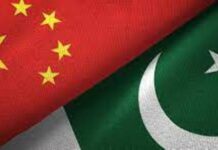BEIJING: Ten years have passed since China launched the Belt and Road Initiative. Today, it is possible to better evaluate this global project, which comprises the Silk Road Economic Belt and the 21st Century Maritime Silk Road, and which facilitates inclusive development through international cooperation projects.
The numbers tell the story, so it is worth looking at the raw data. So far, a total of 152 countries and 32 international organizations have signed more than 200 cooperation documents with China under the framework of the initiative, according to the official Belt and Road website. The success of the Belt and Road is a result of its principles of broad consultation, joint contribution and shared benefits.
Following these principles, China has taken into account the needs and interests of other participating countries, and has worked to seek common ground and shared interests with them. After all, the spirit of the BRI coincides with the two most important aspirations of nations: continuous and responsible development, and progressive improvement in the quality of people’s lives. Both can be pursued through the establishment of win-win relationships among nations, and by collaborating on common ground to overcome cultural differences.
Following this compass, China has taken into account the needs and interests of the growing number of participating countries, and worked to find common ground and shared interests with them, promoting, among other things, the creation of a community with a shared future. In other words, with the BRI, China has shared growth opportunities with many countries, especially developing and least-developed countries, by improving, for example, their infrastructure facilities. In an interconnected world, it is essential to have sufficient infrastructure and efficient connections to ensure trade, people-to-people exchanges and investment.
Conceptually, the BRI is rooted in history, but it looks to the present, or better yet, to the future. It focuses on Asia, Europe and Africa, but it is open to all global partners. It embraces numerous countries and a variety of regions, includes developed and developing nations, and embraces diverse historical traditions, cultures, religions and lifestyles.
Indeed, in addition to its trade and economic aspects, it should not be forgotten that the initiative has been specifically designed to ensure peaceful global development. –The Daily Mail-China Daily news exchange item




